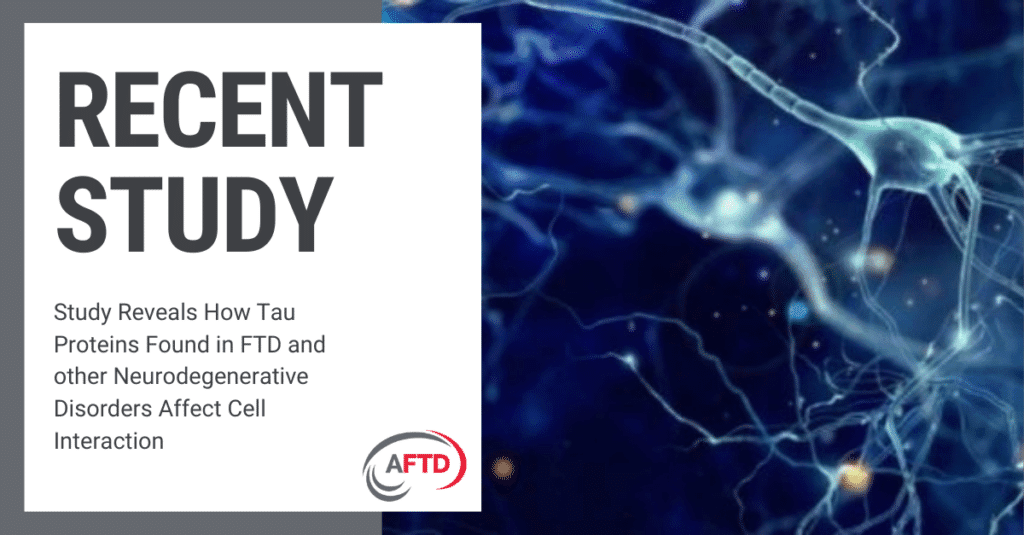Badanie ujawnia, jak białka Tau występujące w FTD i innych chorobach neurodegeneracyjnych wpływają na interakcję komórek

Naukowcy z Buck Institute for Research on Aging uzyskali nową wiedzę na temat tego, w jaki sposób białko tau, które może prowadzić do FTD i innych chorób neurodegeneracyjnych, gdy gromadzi się w sposób nieprawidłowy, wpływa na komórki, z którymi wchodzi w interakcje, i w jaki sposób może przemieszczać się z neuronu do neuronu w niedawny artykuł opublikowane w Komórka.
„Tego rodzaju badania dają nam wgląd w proces chorobowy na poziomie molekularnym. W rzeczywistości jest to o wiele bardziej skomplikowane niż tylko białko, które tworzy splątki” – powiedziała główna autorka artykułu, dr Tara Tracy, w artykule z 26 stycznia Przewodowy artykuł.
Dr Tracy i jej zespół odkryli, że tau bierze udział w kilku ważnych czynnościach komórkowych, takich jak interakcja z ponad 30 białkami mitochondrialnymi, które pomagają tworzyć energię komórkową. Naukowcy wykorzystali neurony z tau, które miały tę samą mutację genetyczną, która powoduje FTD, aby lepiej zrozumieć, jak zdrowe i niezdrowe białka tau wpływają na komórki. Odkryli, że zmutowane białka wpływają na sposób działania komórek, zanim jeszcze utworzą toksyczne, uszkadzające mózg splątki, które przyczyniają się do FTD i innych zaburzeń neurodegeneracyjnych.
Stwierdzono, że zmutowane białka tau miały mniej interakcji w porównaniu ze zdrowymi białkami tau i miały mniej interakcji z białkami mitochondrialnymi. Zgodnie z Przewodowy artykuł, co może oznaczać, że te białka wpływają na metabolizm komórki i czy ma ona wystarczająco dużo energii, aby prawidłowo funkcjonować. Wyniki badania dostarczyły również wglądu w to, jak zmutowane białka tau wykorzystują neuroprzekaźniki do przemieszczania się z własnych komórek do innych części mózgu.
„Myślę, że świetnym pomysłem byłoby opracowanie strategii zapobiegającej wiązaniu się tau z pęcherzykami, aby spowolnić rozprzestrzenianie się tau” – powiedział dr Tracy.
Przeczytaj cały artykuł w Wired Tutaj.
Według kategorii
Nasze biuletyny
Bądź na bieżąco
Zarejestruj się już teraz i bądź na bieżąco dzięki naszemu biuletynowi, powiadomieniom o wydarzeniach i nie tylko…
